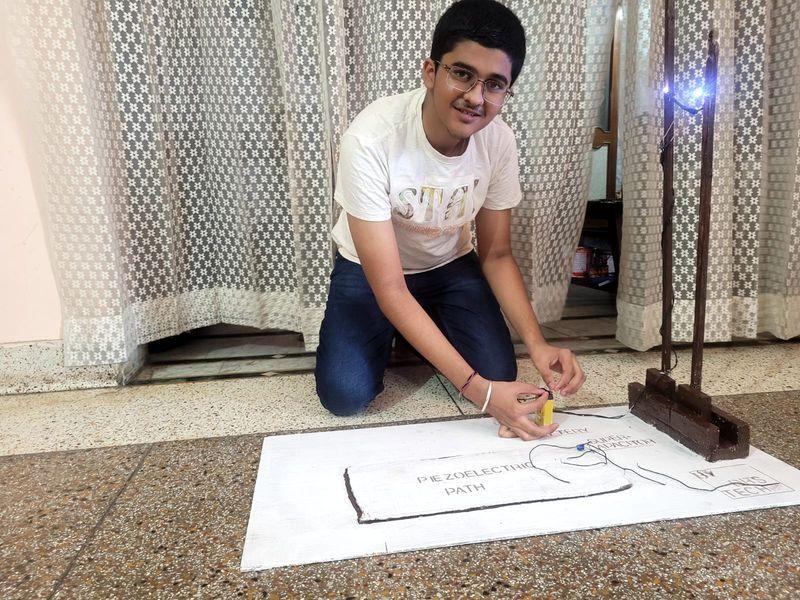
Hoshiarpur Student Builds Device to Generate Power from Footsteps
In a breakthrough innovation, a Class 8 student from Hoshiarpur, Punjab, has developed a remarkable project that could revolutionize the way we think about power generation. Sanchit, an 13-year-old student, has created a device that harnesses energy from the simplest of human activities – walking. His project, aptly titled “Power beneath our feet,” uses piezoelectric technology to convert footsteps into electricity.
The innovative device is designed to be placed on a floor or a surface, and as people walk on it, it generates electricity. This electricity can then be used to power small devices, such as smartphones, lamps, or even tiny appliances. The potential applications of this technology are vast, from powering homes in rural areas to providing electricity in emergency situations.
Sanchit’s project has already caught the attention of local officials, scientists, and enthusiasts. His teacher, Ms. Seema, who guided him throughout the project, is thrilled with his achievement. “Sanchit’s project is a testament to his creativity and innovative thinking,” she said. “He is an exceptional student, and I am confident that he will make a significant impact in the field of science and technology.”
The device uses piezoelectric materials, which are capable of generating an electric charge when subjected to mechanical stress, such as pressure or vibration. When someone walks on the device, their footsteps apply pressure to the piezoelectric material, causing it to generate an electric current. This current is then stored in a battery, which can be used to power small devices.
Sanchit’s project is not just a novel idea; it is also a well-executed one. He built the device using readily available materials, including a piezoelectric element, a battery, and a circuit board. He also designed a casing to protect the device and make it user-friendly.
The potential applications of Sanchit’s device are vast. For instance, it could be used to power homes in rural areas where access to electricity is limited. It could also be used in emergency situations, such as natural disasters, to provide a reliable source of power. Additionally, it could be used in public places, such as shopping malls or public parks, to provide electricity for small devices.
Sanchit’s project is not just a one-off achievement; it is also a reflection of the importance of encouraging innovation and creativity in students. “Innovative thinking is essential for solving the complex problems we face today,” said Dr. Naveen, a scientist from the Indian Institute of Technology, Jalandhar. “Projects like Sanchit’s demonstrate the potential of young minds to create solutions that can make a real difference in people’s lives.”
Sanchit’s achievement is also a testament to the importance of STEM education (science, technology, engineering, and mathematics) in schools. “STEM education is essential for developing the next generation of innovators and problem-solvers,” said Dr. Naveen. “Projects like Sanchit’s demonstrate the importance of integrating science and technology into the curriculum.”
In conclusion, Sanchit’s project is a remarkable achievement that showcases the potential of young minds to create innovative solutions to real-world problems. His device has the potential to transform the way we think about power generation and could have a significant impact on people’s lives. As we move forward, it is essential that we continue to encourage innovation and creativity in students and provide them with the resources and support they need to turn their ideas into reality.
Source:




